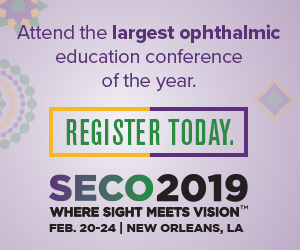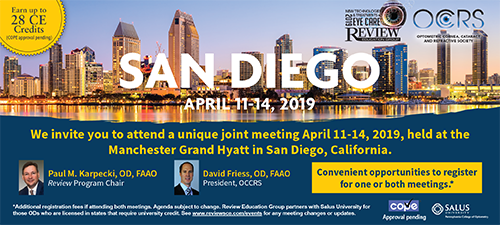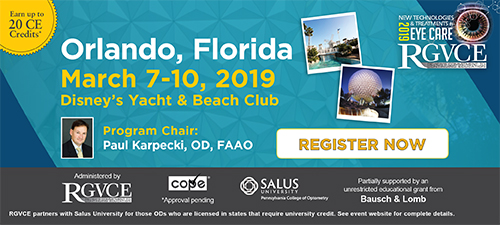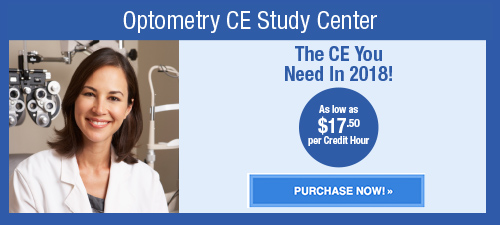
A
weekly e-journal by Art Epstein, OD, FAAO
Off the Cuff: Tragedy and Humanity
Sometimes it takes a tragedy to bring out the depth of humanity that I’d like to think is deep within all of us. On January 17th, while investigating car break-ins, 44-year-old Sgt. Wytasha Carter of the Birmingham, Ala., police department was killed in a senseless shooting—the first fallen officer in Birmingham in almost 15 years. By all accounts, Sgt. Carter was a fair and compassionate family man who loved his calling and often went above and beyond for other officers and the youth of Birmingham. I think many of us, especially baby boomers, are confused by millennials. We grouse about their lack of focus and caring, get annoyed at their supposed lack of commitment and laziness, and wonder why they have no interest in leaving the nest. Actions always speak louder than words and as is so poignantly apparent from what these UAB students have done for Brenda Carter and her family, this generation of optometrists is made of the same kind of caring, decent people that filled your class in optometry school. My good friend, Dr. Kelly Nichols, dean of UABSCO, was kind enough to share some thoughts: “Ms. Brenda Carter is a shining light at our school, and is loved by students, faculty and staff. It is also clear from the outpouring of support that her son, fallen police Sgt. Carter, lived his life and loved his profession with the same faith, goodness and honesty as his family. I am so proud of our students for starting the GoFundMe account, raising over $7,500 for this wonderful family in three days, including many across campus, the city, and nationally through social media. Events like this, as horrible as they are, remind us that humanity unites us. This gift of the heart started by our students assures us through their actions that our profession today and in the future will shine.” We should all be proud of Kelly’s students. They continue the wonderful thread of humanity that binds us all.
|
|||||
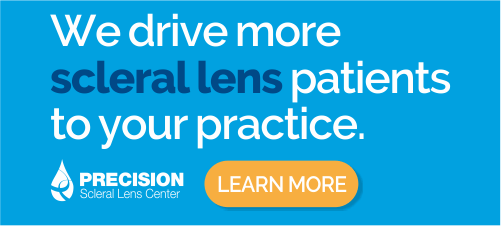 |
||
| Identification of Leukocytes Associated with Midday Fogging in the Post-lens Tear Film of Scleral Contact Lens Wearers | ||||
Midday fogging is a frequent complaint among scleral contact lens (ScCL) wearers, and the mechanism and cause of this is unknown. The purpose of this investigation was to understand the relation between midday fogging, ocular surface leukocytes and ScCL fitting characteristics. Subjects arrived at a clinical exam having worn ScCLs for at least four hours. ScCL were removed, and 150μL of phosphate-buffered saline (PBS) was used to wash the bowl of the ScCL. Eyes were washed post-ScCL removal with 5mL PBS per eye. Wash solutions were collected and leukocytes were then isolated and counted, followed by assessment with flow cytometry. Samples from the post-lens tear fluid were stained with fluorescently labeled antibodies to detect leukocyte distributions.
Thirty-nine eyes from 19 adapted, full-time ScCL wearers were included, and 46% presented with midday fogging. ScCL corneal clearance was 246μm ± 61μm for nonfoggers, while it was 308μm ± 98μm for those with fogging. On average, the number of leukocytes collected from the ScCL bowl (9,551 ± 18,926) was greater than the number of leukocytes recovered from the eye wash (2,195 ± 4,384). ScCL corneal clearance was associated with the presence of fogging, with an odds ratio of 2.24. Leukocytes, predominated by neutrophils, were present in the post-lens tear film of ScCL wearers, and in particular wearers with greater ScCL corneal clearance had greater odds of having midday fogging. |
||||
SOURCE: Postnikoff CK, Pucker AD, Laurent J, et al. Identification of leukocytes associated with midday fogging in the post-lens tear film of scleral contact lens wearers. Invest Ophthalmol Vis Sci. 2019;60(1):226-33. |
||||
|
|||
| Predictors of Falls Per Step and Falls Per Year At and Away from Home in Glaucoma | ||||
A total of 225 patients with glaucoma, or suspected glaucoma, falls data were collected via calendars. Fall location was classified through follow-up questionnaires. And steps taken at and away from home were judged by integrating data from annual week-long accelerometer and GPS trials to determine where glaucoma patients most often fall and how integrated visual field (IVF) damage affects falls rates per year (falls/year) and per step (falls/step) at and away from home. Main outcome measures were the association of IVF sensitivity with fall rates per year or step, stratified by location.
Participants took more away steps than home steps (2,366 vs. 1,524), and differences in away vs. home steps did not vary with IVF sensitivity. A total of 57% of falls occurred at home, with each home step twice as likely to result in a fall as compared to each away step (RR=2.02). Worse IVF sensitivity was not associated with a higher rate of home falls/year or away falls/year, but was associated with a higher rate of home falls/step (RR=1.34/5dB worse sensitivity) and away falls/step (RR=1.47/5dB worse sensitivity). In this glaucoma population, most falls occurred at home, and the risk of any step resulting in a fall was higher at home. Those with greater VF damage were more likely to fall for each step taken both at and away from home. Efforts such as home environmental modification should be considered in the visually impaired to prevent falls while maintaining physical activity. |
||||
SOURCE: Ramulu PY, Mihailovic A, West SK, et al. Predictors of falls per step and falls per year at and away from home in glaucoma. Am J Ophthalmol. 2019; Jan 9. [Epub ahead of print]. |
||||
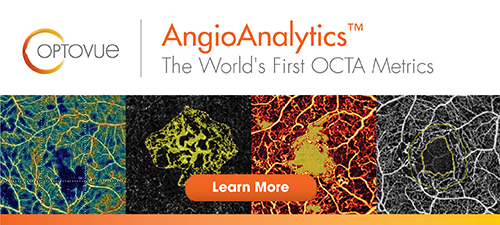 |
||
| Retinoscopy as a Screening Tool for Keratoconus | ||||
Patients between the ages of 10 and 30 years who were referred to the outpatient clinic for keratoconus, suspicion of keratoconus, reduced vision, eye discomfort or frequent change of glasses, or for refraction or refractive surgery. They were screened by two independent and masked retinoscopists for the presence of scissoring reflex to investigate the validity and reliability of retinoscopy in screening for keratoconus using the rotating Pentacam Scheimpflug camera as the gold standard comparison. Patients then underwent vision testing, slit-lamp examination, and Pentacam imaging. A diagnosis of keratoconus by Pentacam was made if the final D index in the Belin and Ambrósio Display was ≥2.69. The results of retinoscopy and Pentacam examinations were compared to assess the validity and reliability of the test.
A total of 123 patients (67 male patients and 45 female patients) with a mean age of 21 years ± 5.6 (range, 10 to 30 years) comprising 245 eyes were included. There were 87 eyes with keratoconus, and using the Amsler-Krumeich classification, 67.8%, 26.4%, 2.3%, and 3.4% of the eyes had stage I, II, III and IV, respectively. Sensitivity, specificity, positive predictive value and negative predictive value of retinoscopy were 97.7%, 79.9%, 70.8%, and 98.4%, respectively. The area under the curve was 0.88. There was excellent agreement between the two retinoscopists. Researchers wrote that retinoscopy appeared to be a very sensitive and reliable test for detecting keratoconus including early disease. They added that such a test might be implemented in population-based screening programs for keratoconus. |
||||
SOURCE: Al-Mahrouqi H, Oraba SB, Al-Habsi S, et al. Retinoscopy as a screening tool for keratoconus. Cornea. 2019; Jan 9. [Epub ahead of print]. |
||||
| News & Notes | |||||||||||||||
Acuity Pro Launches Pro Ten Digital Acuity Software And System
|
|||||||||||||||
| J&J Vision Launches UK’s First Free Nationwide CL Recycling Program Johnson & Johnson Vision is launching the Acuvue Contact Lens Recycle Program, the UK’s first free nationwide program, which enables consumers to easily recycle their contact lenses and blister and foil packaging. The program is available to all soft contact lens wearers regardless of which contact lens brand they use, and aims to reduce plastic waste in landfills and waterways. The company reported in a press release that 20% of wearers reported that they currently dispose of their lenses by flushing them down the toilet or the sink (Johnson & Johnson funded One Poll research with 1,000 contact lens wearers in the UK in November 2018.). The end result will see the recycled contact lenses, blister and foil packaging turned into new products such as outdoor furniture and plastic lumber. Read more. |
|||||||||||||||
|
|||||||||||||||
|
|||||||||||||||
|
Optometric Physician™ (OP) newsletter is owned and published by Dr. Arthur Epstein. It is distributed by the Review Group, a Division of Jobson Medical Information LLC (JMI), 11 Campus Boulevard, Newtown Square, PA 19073. HOW TO ADVERTISE |


